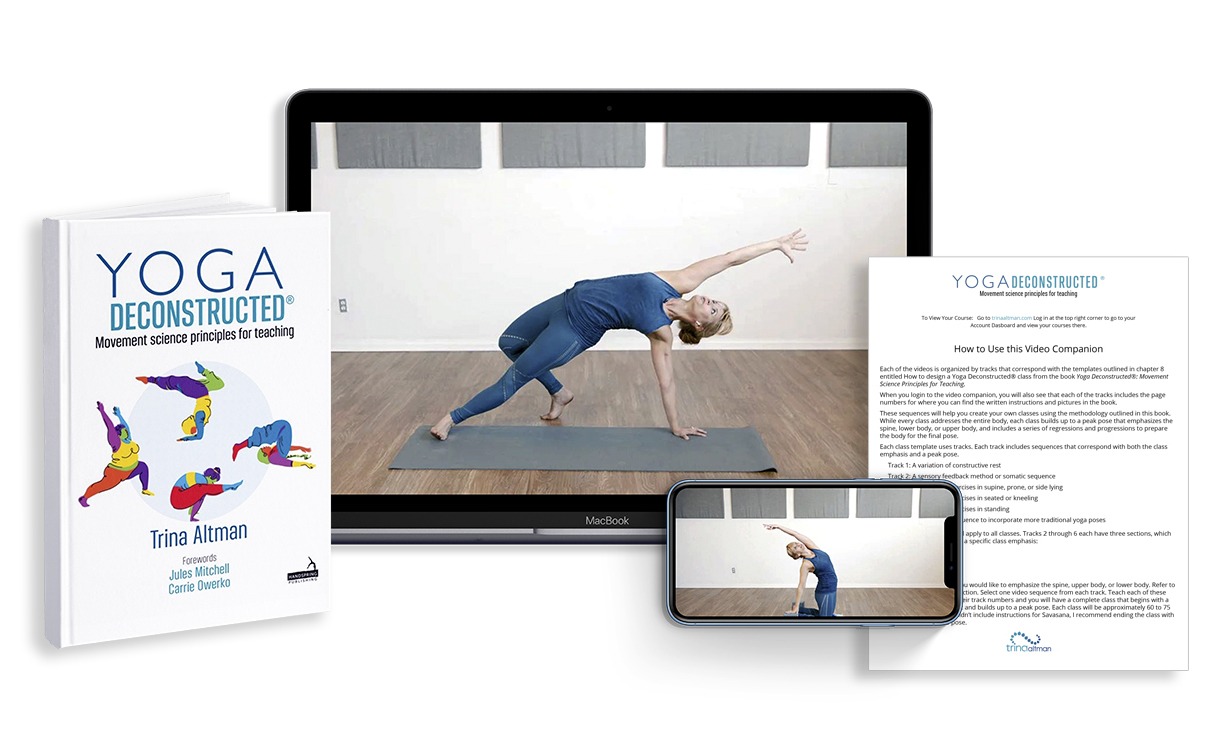
Yoga Deconstructed®: Movement science principles for teaching, is now available!
“One of the best books about the mechanics of the physical practice of yoga!”
The thesis is clear. The citations are solid. The presentation is logical and sequential, and there are lots of practical examples. Highly recommended not only for yoga practitioners and teachers, but for anyone who moves.
Zeke Zubrow, Yoga Teacher
About the book:
Many people are drawn to a physical yoga practice as a way to reduce stress and move more. However, because most of their time is spent at a desk, their bodies are often not well prepared to perform many of the traditional physical poses.
Additionally, naturally flexible people will be drawn to the practice, because it comes easily to them. However, they frequently lack the stability needed to support their joints in these positions, which may make them more vulnerable to pain and repetitive stress injuries.
Yoga Deconstructed® offers the experience of yoga with an interdisciplinary approach that integrates other movement modalities and modern movement science. This approach helps students become more well-rounded in their movements, which prepares them for asana and may improve their ability to function in everyday life.
I have not read such a structured, clear, scientific, and practical book on yoga for a long time.
"I bought myself the book as a present for the new year, but I could not resist and started reading the e-version. This is love at first sight!
I have not read such a structured, clear, scientific, and practical book on yoga for a long time. As a doctor, I have always been close to the approach of do no harm and I practice it not only in medicine, but also in yoga! It is a miracle that I met Trina Altman on Instagram and I realize that she is my new teacher. We have similar values and this is important."
Anastasiya Andreeva, M.D., Ph.D, Yoga Teacher
This book teaches:
- How to help students develop movement skills and reduce their risk of injury within the scope of yoga, Pilates or any other movement modality.
- Regressions and progressions for yoga asana to fit the unique needs of the student.
- Critical thinking skills to help students safely transition from physical therapy to group classes.
- Strategies to introduce variability and neuromuscular re-education to facilitate tissue resiliency, neuroplasticity, and new motor patterns.
- Modern movement applications, including somatics, sensory feedback methods, and preparatory exercises.
- How to deconstruct and expand yoga asana to reduce the risk of hypermobility and repetitive stress injuries.

Want more?
Check out the Yoga Deconstructed®: Movement Science Principles for Teaching Online Video Companion, which includes video tutorials of all of the exercises and sequences outlined in chapter 8 of my book.
